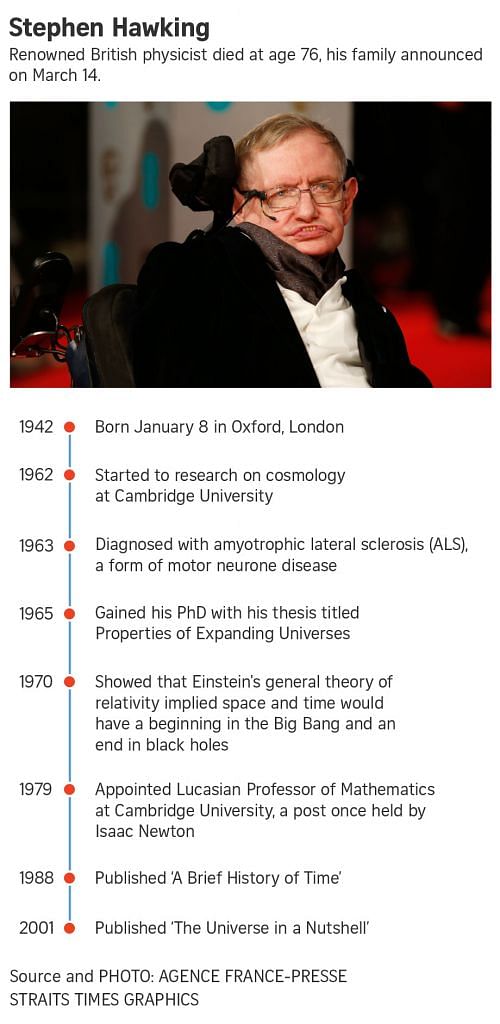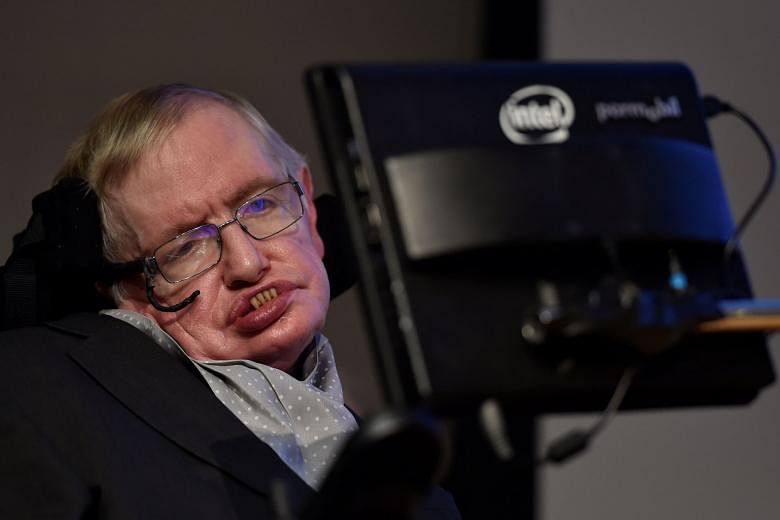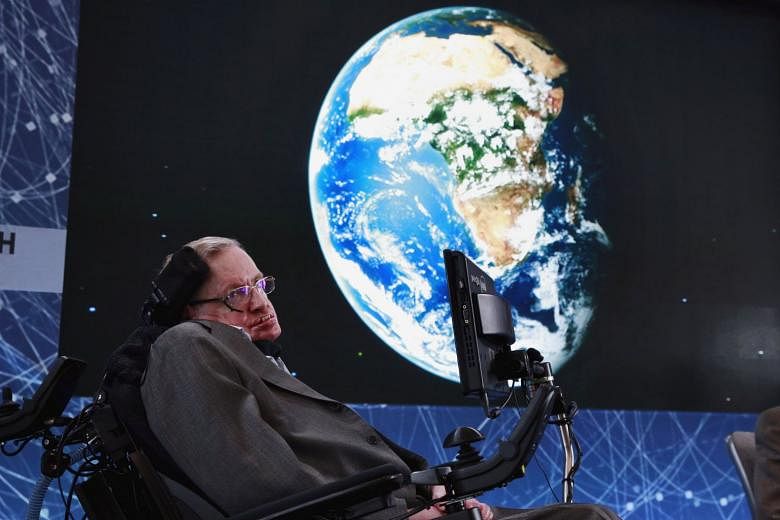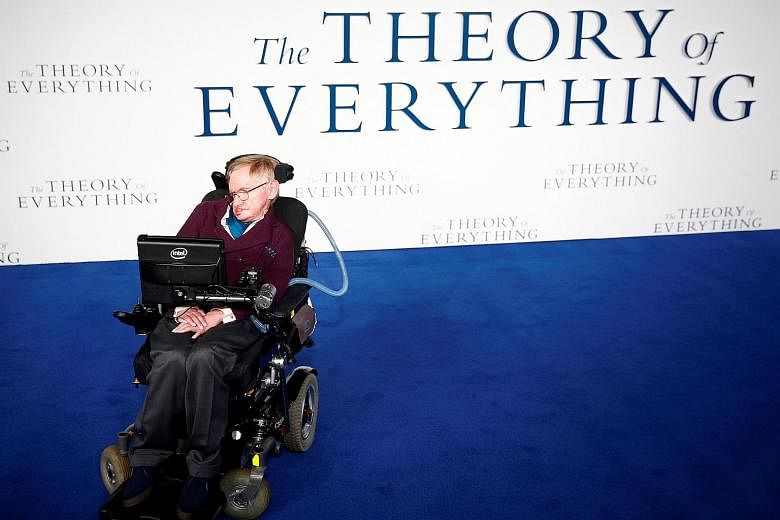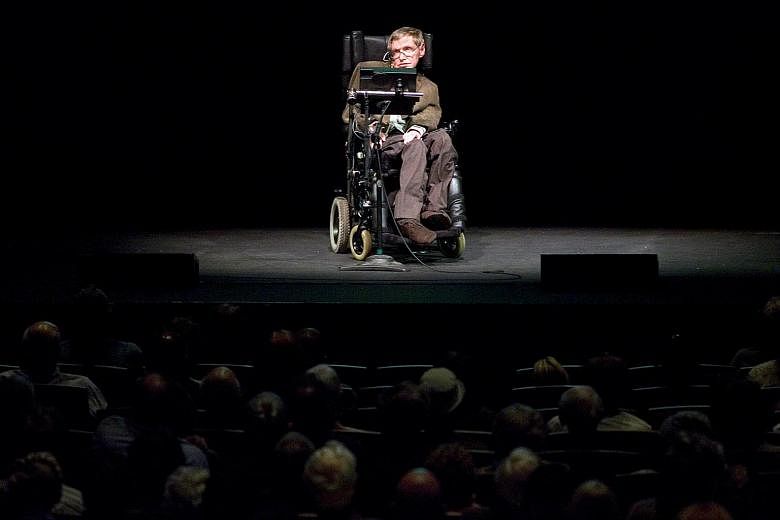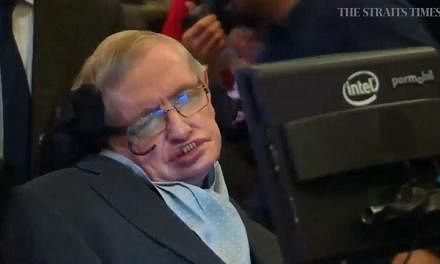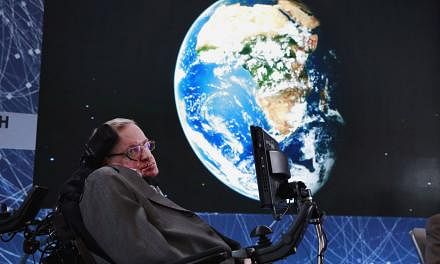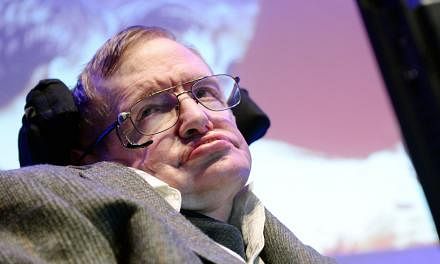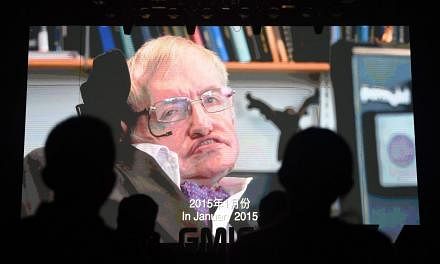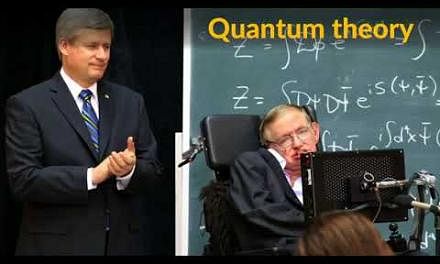LONDON (NYTIMES) - Stephen Hawking, the Cambridge University physicist and best-selling author who roamed the cosmos from a wheelchair, pondering the nature of gravity and the origin of the universe and becoming an emblem of human determination and curiosity, has died early Wednesday (March 14) at his home in Cambridge, England. He was 76.
His death was confirmed by a spokesman for Cambridge University.
"Not since Albert Einstein has a scientist so captured the public imagination and endeared himself to tens of millions of people around the world," Michio Kaku, a professor of theoretical physics at the City University of New York, said in an interview.
Dr Hawking did that largely through his book A Brief History Of Time: From The Big Bang To Black Holes, published in 1988.
It has sold more than 10 million copies and inspired a documentary film by Errol Morris. The 2014 film about his life, The Theory Of Everything, was nominated for several Academy Awards and Eddie Redmayne, who played Dr Hawking, won the best-actor Oscar.
Scientifically, Dr Hawking will be best remembered for a discovery so strange that it might be expressed in the form of a Zen koan: When is a black hole not black? When it explodes.
What is equally amazing is that he had a career at all. As a graduate student in 1963, he learned he had amyotrophic lateral sclerosis, a neuromuscular wasting disease also known as Lou Gehrig's disease. He was given only a few years to live.

The disease reduced his bodily control to the flexing of a finger and voluntary eye movements but left his mental faculties untouched.
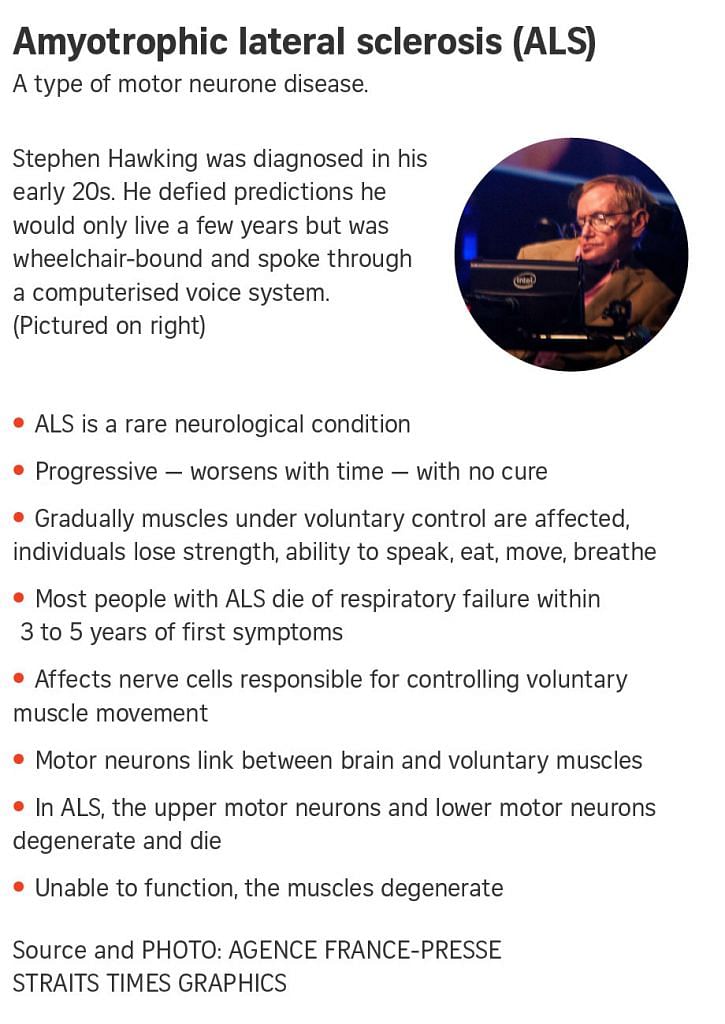
He went on to become his generation's leader in exploring gravity and the properties of black holes, the bottomless gravitational pits so deep and dense that not even light can escape them.
That work led to a turning point in the history of modern physics, one that played itself out in the closing months of 1973 on the walls of his brain when Dr Hawking set out to apply quantum theory, the weird laws that govern subatomic reality, to black holes.
In a long and daunting calculation, Dr Hawking discovered to his befuddlement that black holes - those mythological avatars of cosmic doom - were not really black at all. In fact, he found, they would eventually fizzle, leaking radiation and particles, and finally explode and disappear over the eons.
Nobody, including Dr Hawking, believed it at first - that particles could be coming out of a black hole. "I wasn't looking for them at all," he recalled in an interview in 1978. "I merely tripped over them. I was rather annoyed."
That calculation, in a thesis published in 1974 in the journal Nature under the title Black Hole Explosions?, is hailed by scientists today as the first great landmark in the struggle to find a single theory of nature - to connect gravity and quantum mechanics, those warring descriptions of the large and the small, to explain a universe that seems stranger than anybody had thought.
The discovery of Hawking radiation, as it is known, turned black holes upside down. It transformed them from destroyers to creators - or at least to recyclers - and wrenched the dream of a final theory in a strange, new direction.
"You can ask what will happen to someone who jumps into a black hole," Dr Hawking once said in an interview in 1978. "I certainly don't think he will survive it.
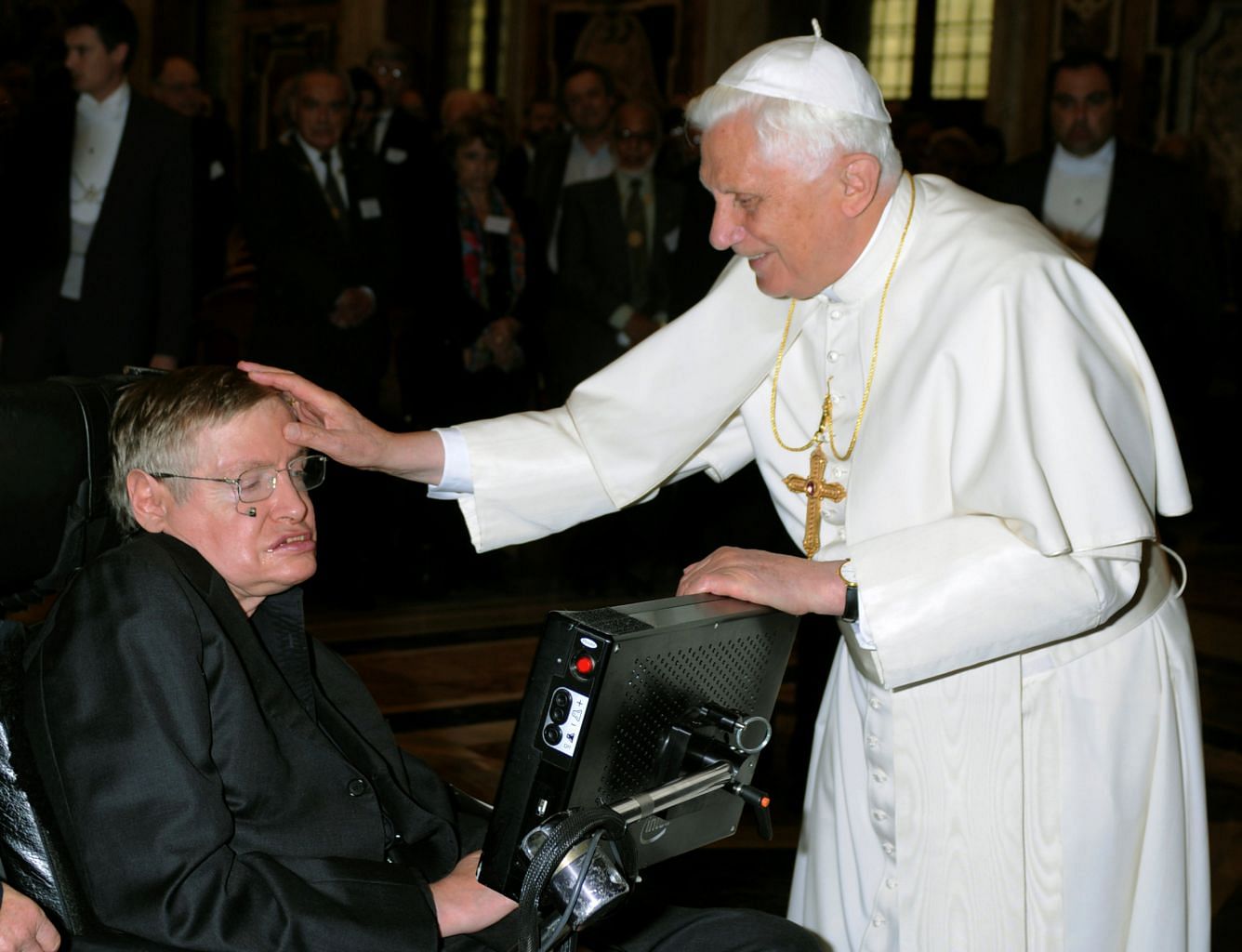
"On the other hand," he added, "if we send someone off to jump into a black hole, neither he nor his constituent atoms will come back, but his mass energy will come back. Maybe that applies to the whole universe."
Dennis W. Sciama, a cosmologist and Dr. Hawking's thesis adviser at Cambridge, called Hawking's Nature paper "the most beautiful paper in the history of physics."
Edward Witten, a theorist at the Institute for Advanced Study in Princeton, said: "Trying to understand Hawking's discovery better has been a source of much fresh thinking for almost 40 years now, and we are probably still far from fully coming to grips with it. It still feels new."
In 2002, Dr Hawking said that he wanted the formula for Hawking radiation to be engraved on his tombstone.
He was a man who pushed the limits - in his intellectual life, to be sure, but also in his professional and personal lives.
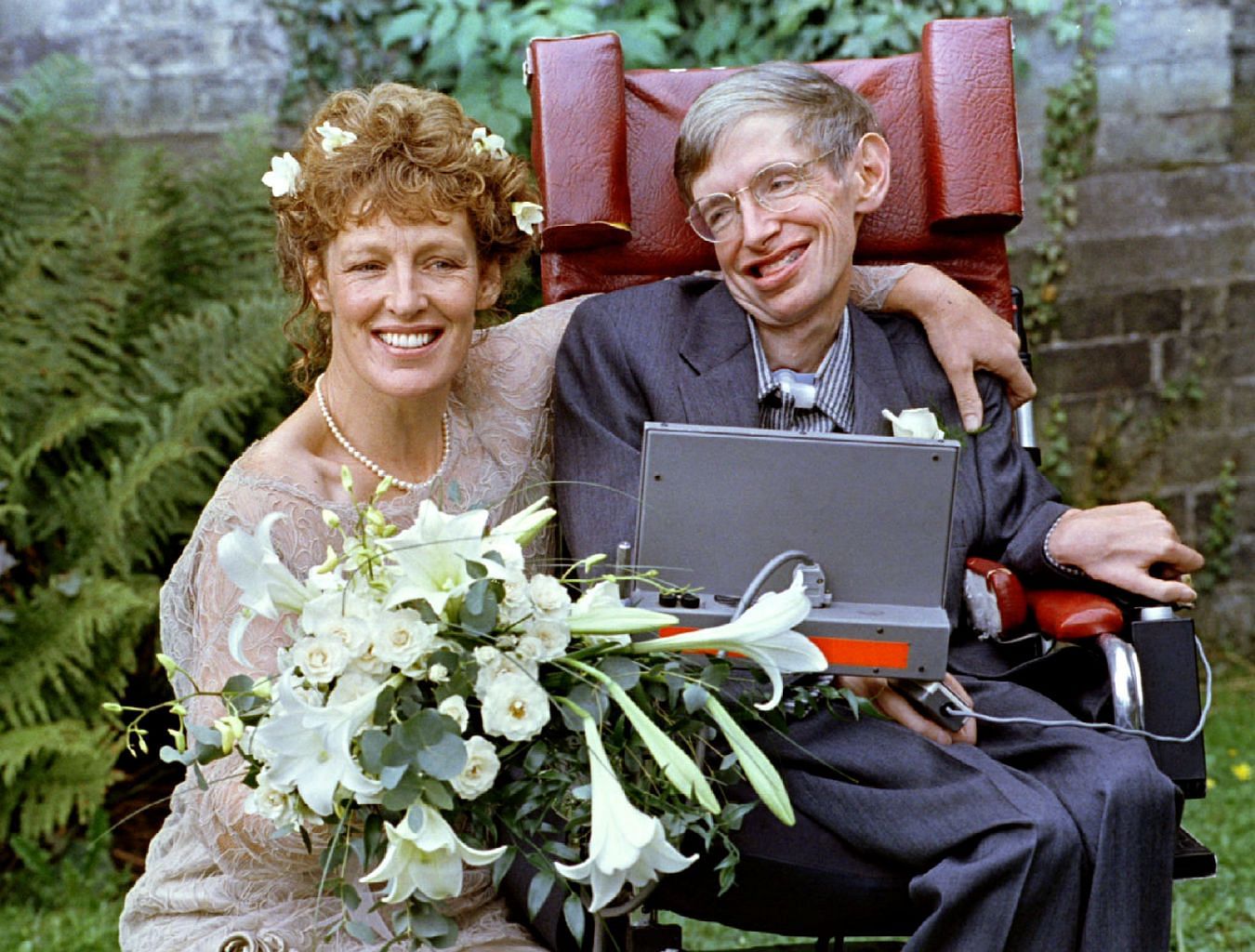
He travelled the globe to scientific meetings, visiting every continent, including Antarctica; wrote best-selling books about his work; married twice; fathered three children; and was not above appearing on The Simpsons, Star Trek: The Next Generation or The Big Bang Theory.
He celebrated his 60th birthday by going up in a hot-air balloon. The same week, he also crashed his electric-powered wheelchair while speeding around a corner in Cambridge, breaking his leg.
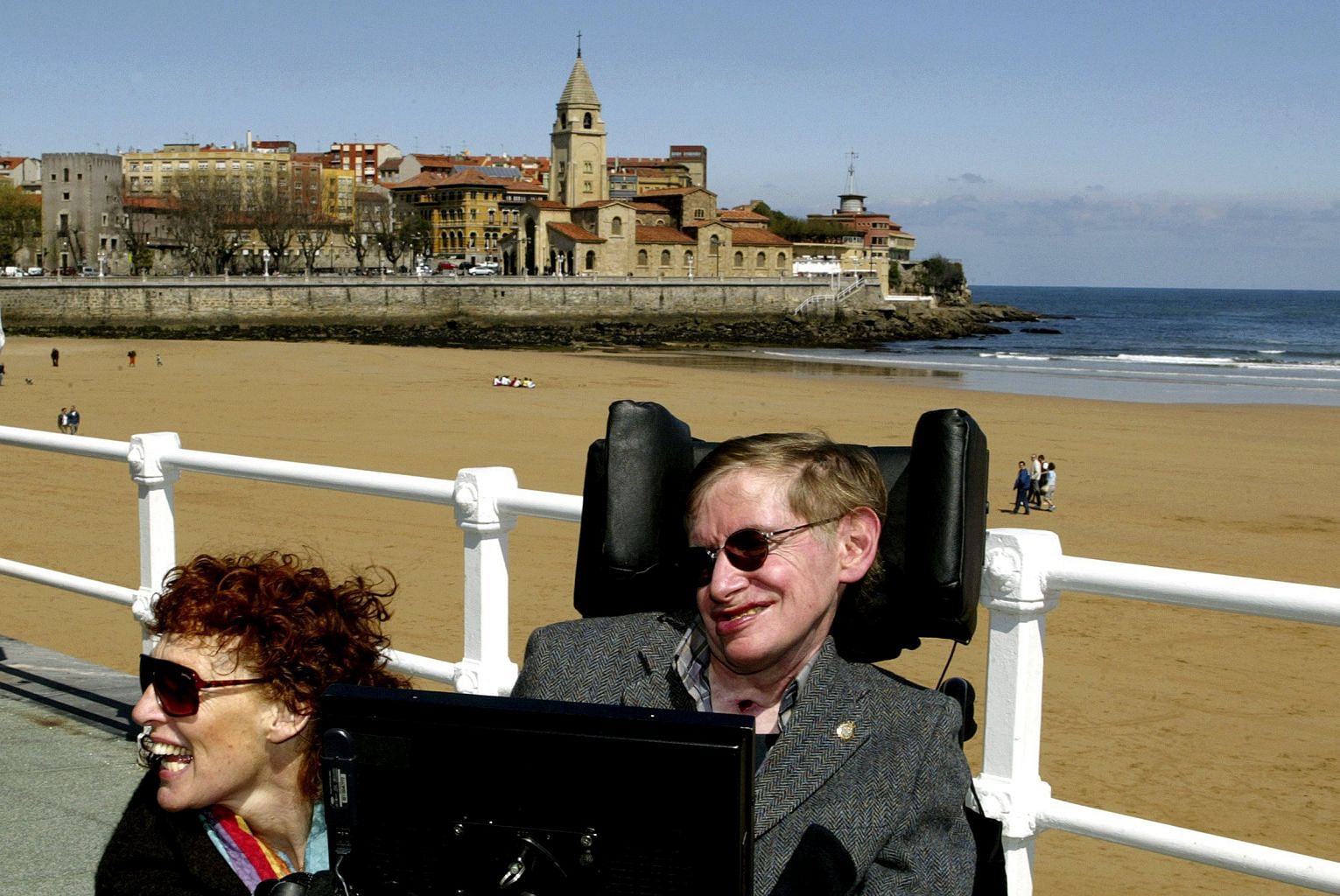
In April 2007, a few months after his 65th birthday, he took part in a zero-gravity flight aboard a specially equipped Boeing 727, a padded aircraft that flies a roller-coaster trajectory to produce fleeting periods of weightlessness. It was a prelude to a hoped-for trip to space with Richard Branson's VirginGalactic company aboard SpaceShipTwo.
Asked why he took such risks, Dr Hawking said, "I want to show that people need not be limited by physical handicaps as long as they are not disabled in spirit."
